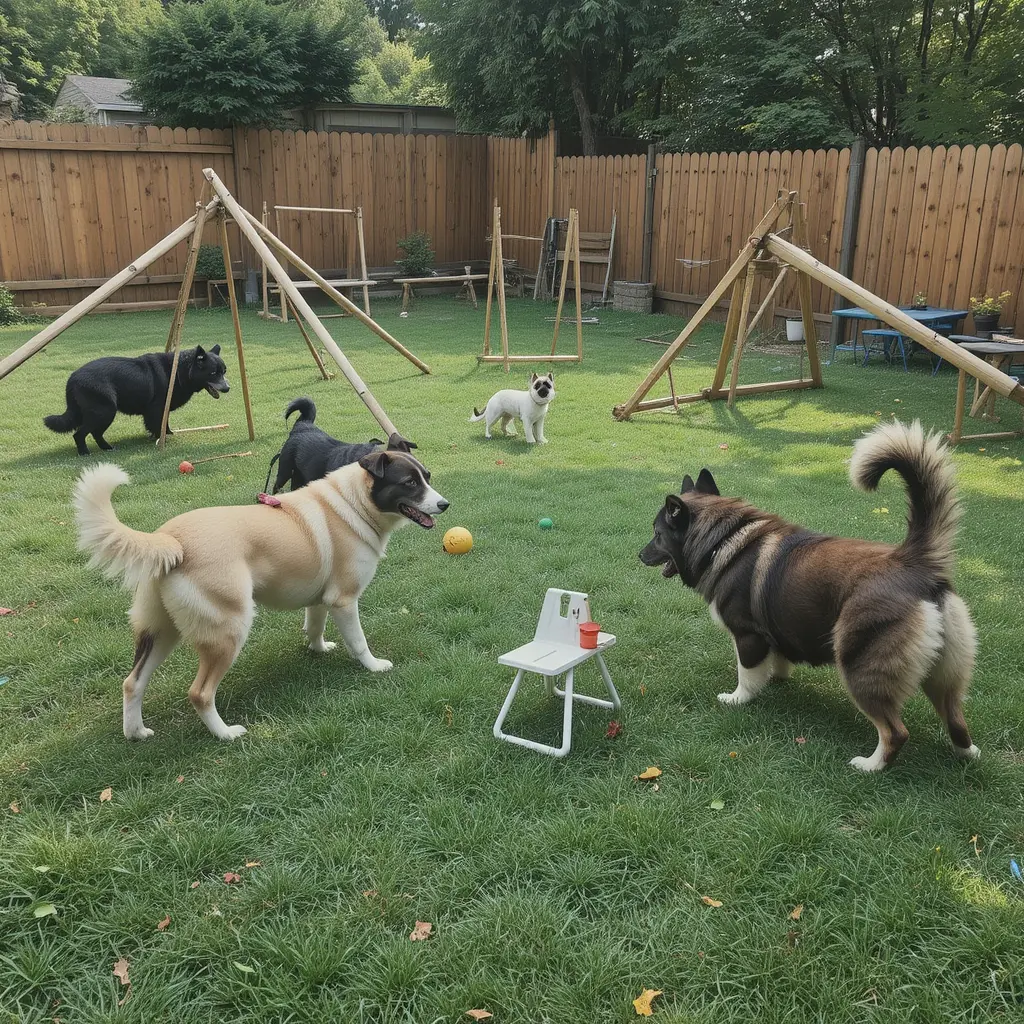As the seasons shift, have you ever wondered how these changes affect your furry friend? Keeping your dog healthy during these transitions is crucial. This article provides essential tips to ensure your pet stays happy and well. From diet adjustments to exercise routines, learn how to support your dog’s well-being throughout the year.
Understanding Seasonal Changes and Their Impact on Dogs
As the seasons change, so do the needs of our furry friends. Dogs, much like humans, can feel the effects of shifting weather patterns. Understanding these changes is crucial for maintaining their health and well-being. I remember when my Labrador, Max, started shedding excessively as spring approached. It was a clear sign that seasonal changes were impacting him.
Recognizing the Signs of Seasonal Changes
Dogs often exhibit specific behaviors and physical changes as the seasons shift. For instance, during winter, you might notice your dog seeking warmth more frequently. This is because their bodies are trying to conserve heat. In contrast, summer can lead to increased panting as they attempt to cool down. It’s essential to observe these signs to ensure your dog remains comfortable and healthy.
One of the most common issues during seasonal transitions is allergies. Just like us, dogs can suffer from pollen allergies in spring. I once treated a Golden Retriever who developed itchy skin every spring. His owner was puzzled until we identified the seasonal allergy. By understanding these patterns, you can take proactive steps to alleviate discomfort.
Adapting Care Routines
Adjusting your dog’s care routine is vital during these times. In colder months, consider providing a cozy bed and perhaps a sweater for short-haired breeds. During hotter months, ensure they have access to plenty of water and shade. I always recommend regular grooming to manage shedding and keep their coat healthy. These small adjustments can make a significant difference in your dog’s comfort.
In my opinion, being attentive to these changes not only helps in keeping your dog healthy but also strengthens the bond you share. By understanding and responding to their needs, you show them love and care. Remember, how to keep your dog healthy during seasonal changes is about being observant and responsive to their unique needs.
Adjusting Your Dog’s Diet for Seasonal Needs
As the seasons change, so do the nutritional needs of our furry friends. Adjusting your dog’s diet for seasonal needs is crucial to ensure they remain healthy and energetic. Just like we swap our wardrobes, our pets might need a dietary shift to cope with the changing weather. Let’s explore how to keep your dog healthy during seasonal changes by focusing on their diet.
Understanding Seasonal Nutritional Needs
In the colder months, dogs often require more calories to maintain their body temperature. Think of it like how we crave hearty stews in winter. A similar principle applies to our pets. Increasing the protein and fat content in your dog’s diet can help them stay warm and active. On the other hand, during warmer months, lighter meals with more hydration can prevent overheating. I remember my Labrador, Max, who always seemed to slow down in the summer until I adjusted his meals to include more water-rich foods like cucumbers and watermelon.
Practical Tips for Adjusting Your Dog’s Diet
First, observe your dog’s behavior and energy levels. If they seem sluggish or overly energetic, it might be time to tweak their diet. For instance, adding omega-3 fatty acids can improve their coat and skin health, which is especially beneficial during dry winter months. I often recommend incorporating fish oil supplements, as they are a simple way to boost these nutrients. Additionally, consider seasonal fruits and vegetables. Pumpkins in the fall are not only festive but also great for digestion. Remember, every dog is unique, so what works for one might not work for another. Always consult with your vet before making significant changes to your dog’s diet.
In my experience, being attentive to these dietary adjustments not only keeps your dog healthy but also strengthens your bond. After all, a happy, healthy dog is a joy to have around, no matter the season.
Maintaining a Consistent Exercise Routine
Maintaining a consistent exercise routine for your dog is crucial, especially during seasonal changes. As a Veterinary Specialist, I often see how these changes can affect a dog’s health. Just like us, dogs need regular activity to stay fit and happy. But how do you keep your dog healthy during seasonal changes? Let’s explore some practical tips.
Understanding Your Dog’s Needs
Every dog is unique, and their exercise needs can vary. For instance, a Labrador might enjoy long runs, while a Bulldog may prefer shorter walks. It’s essential to tailor the exercise routine to your dog’s breed, age, and health condition. I remember a client who had a senior Golden Retriever. They adjusted the routine to include gentle walks and swimming, which was perfect for the dog’s joints. This kind of adaptation is key to maintaining a consistent exercise routine.
Adapting to Weather Changes
Weather can significantly impact your dog’s exercise routine. In colder months, you might need to shorten outdoor activities or invest in a dog coat. Conversely, during hot weather, early morning or late evening walks can prevent overheating. I once had a client who used indoor games to keep their dog active during a particularly harsh winter. They turned their living room into a mini agility course, which was both fun and effective. Such creative solutions can help keep your dog healthy during seasonal changes.
In my opinion, consistency is more important than intensity. Regular, moderate exercise can do wonders for your dog’s physical and mental well-being. Remember, the goal is to keep your dog engaged and happy, regardless of the season. By understanding and adapting to your dog’s needs, you can ensure they remain healthy and active all year round.
Grooming Tips for Different Seasons
As the seasons change, so do the grooming needs of your furry friend. Understanding how to adapt your dog’s grooming routine is crucial for their health and comfort. Let’s explore some grooming tips for different seasons to ensure your dog stays happy and healthy.
Spring and Summer Grooming
During the warmer months, dogs often shed their winter coats. Regular brushing helps manage shedding and keeps your home cleaner. I remember a client whose Golden Retriever, Max, would leave tufts of fur everywhere. A simple routine of daily brushing made a world of difference. It’s also important to keep your dog’s coat trimmed to prevent overheating. However, avoid shaving them completely, as their fur provides protection against sunburn.
Bathing is another essential part of summer grooming. Dogs love to play outside, and they can get quite dirty. Use a gentle shampoo to keep their skin healthy. I once had a Labrador named Bella who loved rolling in the mud. A good bath always brought back her shiny coat. Don’t forget to check for ticks and fleas, as they are more prevalent in warmer weather.
Fall and Winter Grooming
As temperatures drop, your dog’s grooming needs change. In fall, continue regular brushing to remove dead hair and prevent matting. This is especially important for breeds with longer coats. I often advise owners of Huskies to invest in a good undercoat rake. It helps manage their thick fur and keeps them comfortable.
In winter, dogs may not need as many baths, as frequent washing can dry out their skin. Instead, focus on keeping their paws clean and moisturized. Salt and ice can irritate their pads, so a quick rinse after walks is beneficial. I always recommend using a paw balm to protect against cracking. It’s a small step that makes a big difference.
By following these grooming tips, you can help your dog stay healthy and comfortable throughout the year. Remember, grooming is not just about appearance; it’s about maintaining your dog’s overall well-being. As a veterinary specialist, I believe that a well-groomed dog is a happy dog. So, embrace the seasonal changes and adjust your grooming routine accordingly.
Monitoring Your Dog’s Health and Behavior
As the seasons change, it’s crucial to pay attention to your dog’s health and behavior. Just like humans, dogs can be affected by shifts in weather, which can influence their mood and physical well-being. Understanding these changes can help you keep your furry friend happy and healthy.
Recognizing Changes in Behavior
Dogs, much like us, can exhibit different behaviors as the seasons shift. For instance, during colder months, you might notice your dog becoming less active or seeking warmth more often. On the other hand, warmer weather might make them more energetic or even a bit restless. As a Veterinary Specialist, I’ve seen many dogs who become anxious during thunderstorms or when the days get shorter. It’s important to monitor your dog’s behavior closely. If you notice anything unusual, such as excessive barking or changes in appetite, it might be time to consult your vet.
Monitoring Health: A Personal Touch
Keeping an eye on your dog’s health is essential, especially during seasonal changes. Regular check-ups can catch potential issues early. I remember a case where a client noticed their dog was drinking more water than usual during the summer. It turned out to be a sign of a health issue that needed attention. Simple observations like these can make a big difference. Always ensure your dog has access to fresh water and a balanced diet. In my opinion, a little extra care goes a long way in ensuring your pet’s well-being.
In conclusion, understanding how to keep your dog healthy during seasonal changes involves being attentive to their needs and behaviors. By doing so, you can ensure your beloved pet remains in good spirits and health all year round.
Conclusion
As the seasons change, so do the needs of our beloved pets. Ensuring your dog remains healthy during these transitions is crucial. From my experience as a Veterinary Specialist, I’ve seen how small adjustments can make a big difference in a dog’s well-being. It’s like how we swap our wardrobes with the weather; dogs need similar care adjustments.
Understanding Your Dog’s Needs
Each dog is unique, much like how people have different preferences for weather. Some dogs thrive in cooler temperatures, while others prefer the warmth. Observing your dog’s behavior can provide insights into their comfort levels. For instance, my Labrador, Max, loves the snow but shivers in the rain. Recognizing these preferences helps in making informed decisions about their care.
Practical Tips for Seasonal Care
One practical tip is to adjust your dog’s diet according to the season. During colder months, dogs may require more calories to maintain body heat. Conversely, in warmer months, a lighter diet might be more suitable. It’s similar to how we crave hearty stews in winter and fresh salads in summer. Additionally, regular vet check-ups are essential. They are like routine car maintenance, ensuring everything runs smoothly.
In conclusion, keeping your dog healthy during seasonal changes involves understanding their unique needs and making thoughtful adjustments. It’s a rewarding process that strengthens the bond between you and your furry friend. Remember, a little attention goes a long way in ensuring your dog’s happiness and health throughout the year.






